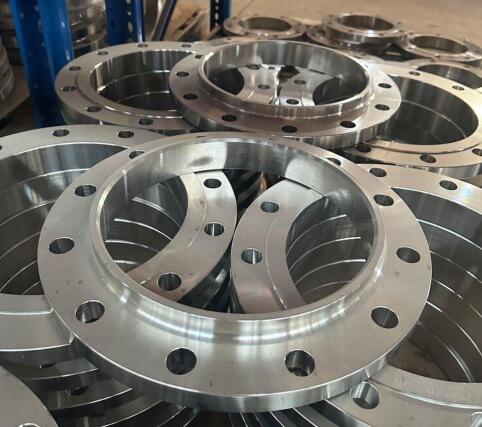
The dimensional accuracy of flanges is one of the important indicators of their quality. During inspection, it is necessary to pay attention to key dimensions such as the inner diameter, outer diameter, and thickness of the flange to ensure that they meet the design requirements. At the same time, the flatness, roundness, and other form and position tolerances of the flange should be checked to ensure the accuracy of its fit with other components.

2. Surface quality inspection
The surface quality of the flange directly affects its service life and sealing performance. During inspection, attention should be paid to whether there are defects such as cracks, pores, and slag inclusions on the surface of the flange. In addition, the surface treatment of the flange should be checked, such as whether the processes such as galvanizing and plastic spraying are uniform and firm.
3. Material chemical composition and mechanical property inspection
The material chemical composition and mechanical properties of the flange are the key factors that determine its quality and performance. During inspection, the material of the flange needs to be chemically analyzed to ensure that its composition meets the relevant standards. At the same time, the flange should also be subjected to mechanical property tests such as tensile and impact tests to evaluate its strength and toughness.
The pipe flange material is one of the important factors affecting the performance of the flange. A good flange material should have the characteristics of high hardness, high strength, and corrosion resistance. There are many ways to test the flange material. The most commonly used method is to determine the composition and organizational structure of the material through chemical analysis and metallographic analysis. Chemical analysis can detect the content of each element in the material, and metallographic analysis can detect the grain structure and phase composition of the material. If the material composition does not match the pressure grade, then the flange material is unqualified.
4. Sealing performance test
The main function of the flange is connection and sealing, so its sealing performance is crucial. A good flange should have good sealing performance to ensure that the system does not leak oil or air. During the test, the flange needs to be tested for air tightness or water tightness to ensure that it has a good sealing effect.
The air tightness test can be performed with dry gas or wet gas to test the sealing performance of the flange under different air pressures. The liquid tightness test can be performed with water or oil to test the sealing performance of the flange under different pressures. If the flange leaks oil or air during the test, the sealing of the flange is unqualified. In addition, check whether the connecting bolts of the flange are tightened reliably to prevent leakage.
5. Corrosion resistance test
The corrosion resistance of the flange is one of the important factors affecting the life of the flange. A good flange should have good corrosion resistance to ensure long-term stable operation of the system. There are many ways to test the corrosion resistance of the flange. The most commonly used method is to test it through salt spray test and corrosion test. The salt spray test can simulate the corrosion conditions in the marine environment and detect the corrosion resistance of the flange in salt water of different concentrations. The corrosion test can be carried out with strong acid or strong alkali to detect the corrosion resistance of the flange in different corrosive media. If the flange is severely corroded during the test, the corrosion resistance of the flange is unqualified.
In short, the specific standards for flange detection involve dimensional accuracy, surface quality, material chemical composition and mechanical properties, sealing and corrosion resistance. Only by fully understanding and following these standards can the quality and safety of flanges be ensured. In practical applications, we should strictly follow the relevant standards for testing to ensure the safety and stability of industrial production.
Read more: Pipe and flange connection or Pipe flange size type and selection
Related information
